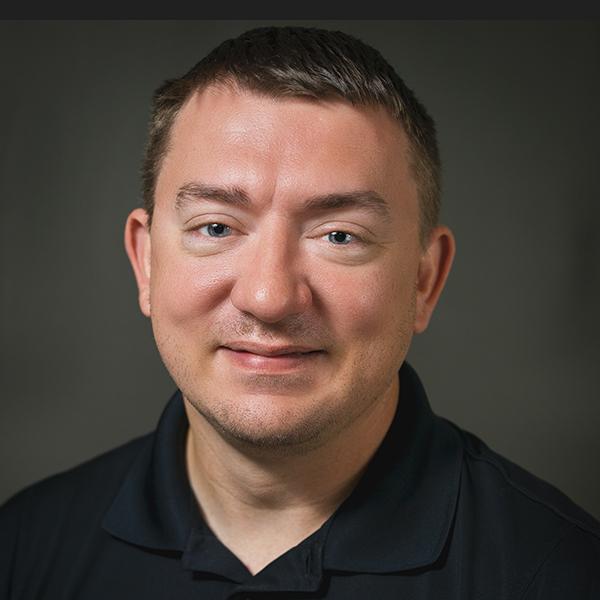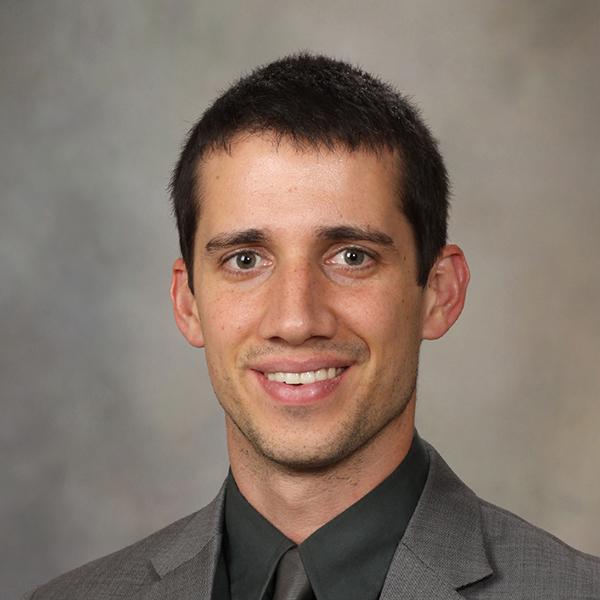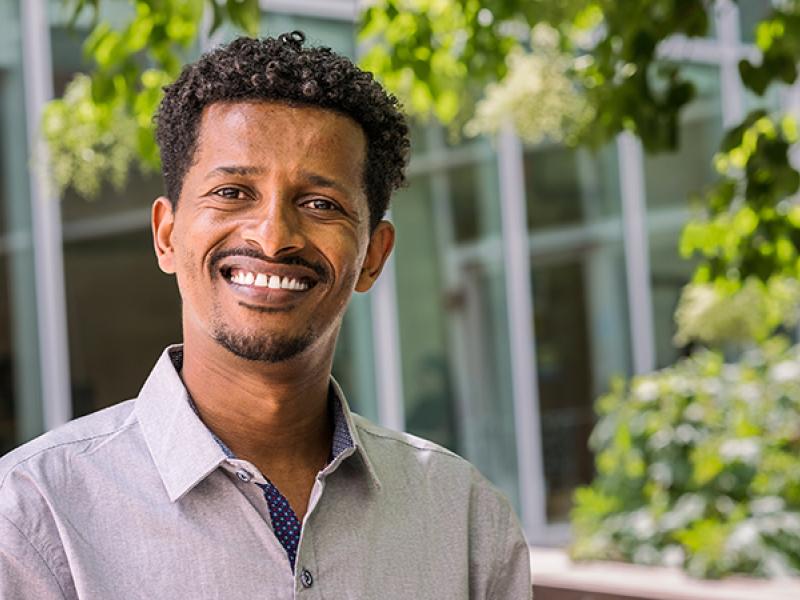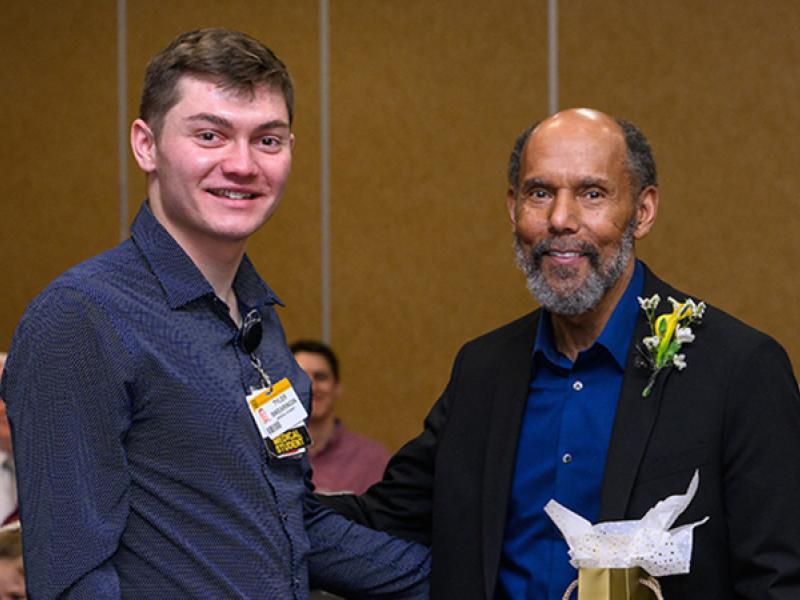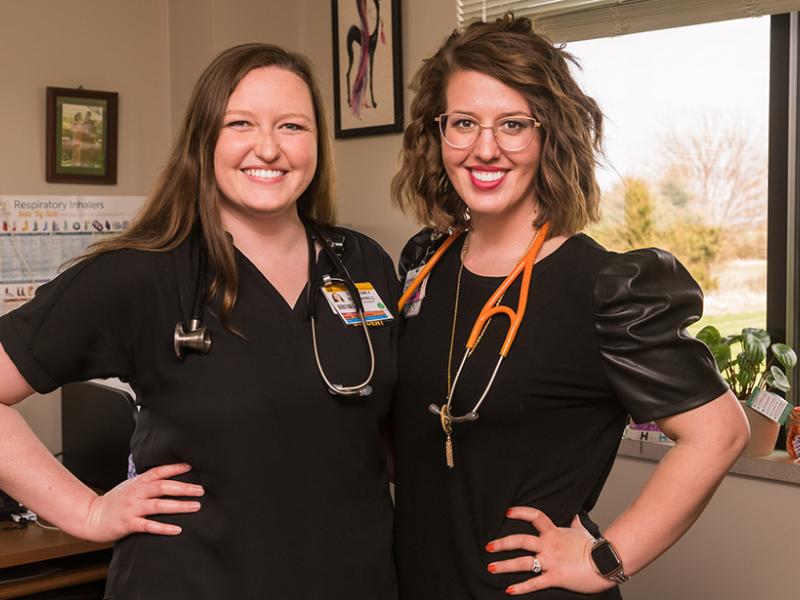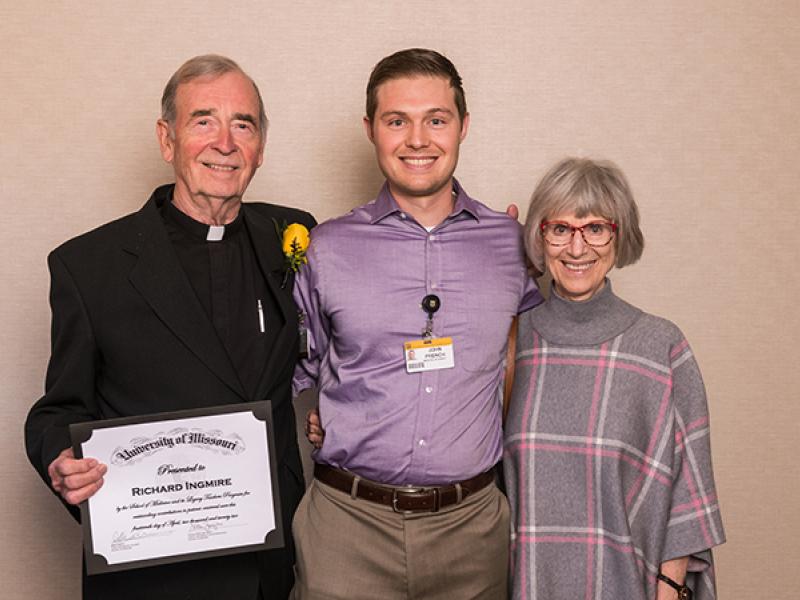The teaching program at Capital Region has provided excellence in training and preparation of doctors for over 70 years. In 1952, Charles E. Still Osteopathic Hospital (Capital Region is the product of a merger between Still Hospital and Memorial Community Hospital), began its teaching program welcoming medical students and interns to continue on their path to becoming physicians.
CRMC continues to offer a family practice residency (FMR), and in 2012 it began one of the first integrative medicine curriculums in Missouri. Today, CRMC FMR is part of the University of Missouri network of residencies with all three years of training and local administration in Jefferson City, Missouri. It offers a wide variety of training options, including POCUS, Botox, Simulation Center (practice of emergency situations), Integrative Medicine, and a rural clinic track.
Residency
In 1988 Capital Region accepted its first family practice resident. Since then, the program has offered tailored, often one-on-one guidance to our learners. The family practice residency is unopposed, giving residents a great deal of hands-on experience and no need to wait in line to perform procedures or participate in an educational opportunity. The mission of our program is to train capable, compassionate family physicians in an environment of mutual respect based in real-world experiences. We reinforce values of ethical practice, community orientation, personal/professional balance and lifelong learning.
We invite you come train with us at Capital Region's Family Medicine Residency Program. Please explore our site and learn why we've earned this strong reputation.
How to apply
If you are interested in applying for a family medicine residency position, please use the electronic residency application service (ERAS). Our program does not have a supplemental application.
Personalized interview day
Residency interviews are offered via a virtual option for applicant convenience. However, recognizing that being able to see our institution in-person is important to many applicants, we offer meet-and-greet dinners throughout interview season. Rather than making applicants choose a date from a pre-determined panel, we work to set up an interview date and place you with interviewers that should best be able to answer your questions based on your interests.
Medical students
Located in the heart of Missouri, Capital Region welcomes medical students from Kirksville College of Osteopathic to complete their clinical rotations during their third and fourth years of medical school.
Rotations in internal medicine, surgery, emergency medicine, critical care, and family practice are just a few of the requirements of their medical school training, which are all completed on-site at Capital Region.
Q&A
Describe didactics at your facility.
We have a lecture/interactive meeting every morning at 7-8 a.m. Sometimes there is lecture over the noon hour. And, depending on the attending/lecturer’s schedule other didactics are schedule at other times of the day/weekdays. These are protected times when you are excused from your rotation. Monthly didactics include: Grand Rounds, POCUS, IMR, Journal Club, just to name a few.
How many students and residents are on a rotation?
Rotations at Capital Region Medical Center are often one-on-one with their attending or alongside other residents or students – such as inpatient and ER rotations. This translates into lots of hands-on experience.
Specifically, often your Internal Medicine rotation will include a maximum of two students and two residents. This allows the workload to be split up reasonably without overwhelming “green” third year students or first year residents. As your speed and skill levels improve, you will be challenged with additional responsibilities. For people who are eager to get extra experience, this site provides opportunities to get extra time in the OR, Labor and delivery, ER, and ICU, as well as a bevy of procedural opportunities.
Are residents offered/encourage to actively participate in procedures?
When the attending feels the resident are capable or participating in the procedures, he/she will allow them to assist with supervision. Majority of the attendings are "hands-on." Procedures include, but not limited to:
- Osteopathic Manipulation
- Joint Injection/Aspiration
- I&D Abscess, Skin
- IUD Insertion/Removal
- Destruction of skin lesion
- Skin biopsies (punch, shave)
- Ingrown Toenail Surgery/Excision
- Contraception implant insertion and removal (IUD & Nexplanon)
- Pap Test Collection
- POCUS
- Botox
- Cerumen Disimpaction
- EKG Interpretation
- Intubation
- Laceration Simple with Sutures
- Central Line Placement
Is the hospital affiliated with other hospitals or institutions? What other medical school affiliations does your facility have?
Aside from our integration with MU Health Care we also have affiliations with JCMG, LRHS, SSM, and Compass Health. We also have an affiliation with ATSU-KCOM and host some of their students. Working with a variety of local resources allows our residents to better reach and support patients in our community.
What is the on-call policy for learners?
Residents take call approximately every 10th night with a protected post-call day the following day. Generally, per month it is four nights for PGY1, three nights for PGY2, and two nights for PGY3. Night calls are 7pm-7am. This policy is currently under review.
Is there 24-hour access to the library and internet resources?
Yes, in the hospital. And, online resources are also available. Residents also have access to the J. Otto Lottes Health Sciences Library in Columbia.
Is charting done electronically?
The hospital and clinics utilize Cerner/Oracle for all electronic medical records.
Is there a food allowance and how much?
Residents have access to hot, prepared meals through the physician’s lounge while on duty.
Are lockers available for residents to use?
Yes, there are lockers available in the resident’s lounge.
Typical Day
- 7 a.m. Morning report with on-site med students and residents. Students and residents are welcomed to eat breakfast daily and typically bring it to the education room during lecture. We generally have two days of interactive case presentations per week. Lectures are provided by attendings, or may be comprised of Medical Knowledge Self-Assessment Program, tumor board with the oncology team, or other department managers, etc.
- After morning report, which usually concludes by 8 a.m., you meet up with your attending on rotation or go to your continuity clinic. Most rotations take lunch at noon, but the rotations you choose will dictate your lunch schedule. In the afternoon, you will either be on rotation, in continuity clinic, or participating in special didactic sessions. Special didactic sessions occur approximately once monthly and many are optional.
- Noon didactics consist of Point of Care Ultrasound workshops, journal club, Family Medicine Ground Rounds (Wednesdays), SIMS Lab, and other attending-driven presentations. These rotate on a weekly basis and cover topics access the scope of family medicine.


